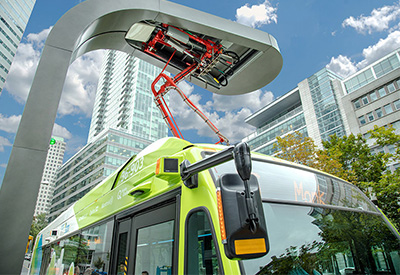Multi-Million Dollar Investment in Brampton Electric Bus Network

Aug 7, 2019
The Federal government has announced an investment of $7.6 million from the Low Carbon Economy Fund toward the largest global deployment to date of fully interoperable battery electric buses and high-powered, overhead, on-route chargers in Brampton, which will displace the city’s diesel buses and significantly reduce greenhouse gases and air pollution.
A $3.5-million investment from Natural Resources Canada’s Green Infrastructure Program to help the city procure, install, operate and maintain four 450kW overhead bus-charging stations and eight battery electric buses, was also announced.
With a total of more than $11 million in funding provided by the Government of Canada toward the Brampton portion of the Pan-Canadian Electric Bus Network, these investments will help reduce pollution and energy costs and pave the way for a zero-emission transportation sector.
Canada’s two leading bus manufacturers, New Flyer Industries and Nova Bus, will manufacture the battery electric buses, and Asea Brown Boveri (ABB) and Siemens will provide the on-route chargers, which will demonstrate the performance of the overhead electric bus charging system and enable future mass deployments.
To date, the Government of Canada has invested $182.5 million to support the deployment of electric chargers; natural gas and hydrogen refuelling stations; the demonstration of new, innovative charging technologies; and the development of codes and standards for low-carbon vehicles and refuelling infrastructure.
Through Canada’s national energy dialogue, Generation Energy, Canadians made it clear that the transition to energy independence through the combined efforts of federal, provincial and territorial governments is a necessity for advancing toward a low-carbon future.









![Guide to the Canadian Electrical Code, Part 1[i] – A Road Map: Section 52 — Diagnostic imaging installations](https://electricalindustry.ca/wp-content/uploads/2022/11/Guide-CE-Code-2.png)






